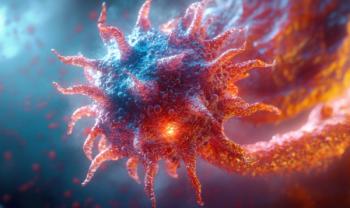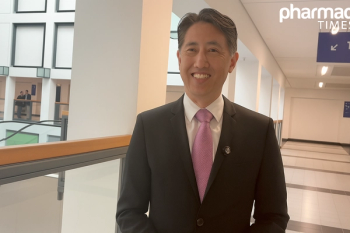
Pharmacy Practice in Focus: Oncology
- July 2024
- Volume 6
- Issue 5
The Role of Neoadjuvant Immunotherapy Advances in Resectable Stage III Melanoma
NADINA trial results support a new standard of care for these patients.
Melanoma is the fifth most common type of cancer in the United States, with an estimated 100,640 new cases and 8290 deaths in 2024.1 The majority of patients will present with localized disease, of which surgical resection is the treatment of choice and is associated with approximately 90% long-term survival in stage I disease.2 To reduce the risk of recurrence, adjuvant immunotherapy or targeted therapy is indicated in patients with stage IIB or higher resectable disease. However, despite surgical resection and adjuvant therapy, the relapse rate is as high as 40% within the first 2 years in patients with stage III melanoma.3
Neoadjuvant administration of immunotherapy has become appealing in melanoma because of several hypothesized benefits over adjuvant therapy, including its ability to activate more antitumor T cells before resection of the bulk of the tumor. With adjuvant therapy, the measurable tumor has already been excised, whereas neoadjuvant therapy allows for the delivery of immunotherapy when the tumor is still present, allowing for increased proliferation and maturation of intratumoral T cells.3,4
SWOG S1801, PRADO, and OpACIN-neo Trials
To date, findings from several studies have demonstrated the benefit of neoadjuvant immunotherapy in patients with stage III melanoma. SWOG S1801 (NCT03698019) was a recent randomized phase 2 trial that evaluated the improvement in event-free survival (EFS) in patients with at least stage IIIB melanoma who received either pembrolizumab (Keytruda; Merck) for 3 doses before surgery followed by 15 doses of adjuvant therapy or surgery followed by adjuvant pembrolizumab for 18 doses. Results from the trial found that EFS was significantly longer in the neoadjuvant arm at 2 years, with a rate of 72% vs 49%.4
Findings from another phase 2 trial in 2 different cohorts, presented as the OpACIN-neo and subsequent PRADO trials (NCT02977052), demonstrated that a combination of 2 cycles of neoadjuvant ipilimumab (Yervoy; Bristol Myers Squibb) at 1 mg/kg and nivolumab (Opdivo; Bristol Myers Squibb) at 3 mg/kg every 3 weeks resulted in an EFS rate of 77% to 80%, with a sustained benefit seen after 3 years of follow-up.5-7
The NADINA Trial
Results of the NADINA trial (NCT04949113) were presented at the 2024 American Society of Clinical Oncology Annual Meeting in Chicago, Illinois, and may indicate a new standard of care for the treatment of resectable stage III melanoma. Results from the study found that neoadjuvant ipilimumab and nivolumab significantly reduced the risk of disease recurrence or death compared with standard adjuvant therapy. NADINA is a multicenter, international, phase 3 trial of patients with resectable, macroscopic stage III melanoma with at least 1 pathologically proven lymph node metastasis and a maximum of 3 additional in-transit metastases. Macroscopic disease was defined as a pathologically proven lymph node metastasis that was palpable, positive according to PET, or measurable on imaging according to RECIST criteria. Patients were randomly assigned to receive either neoadjuvant or adjuvant immunotherapy. Patients in the neoadjuvant group received neoadjuvant ipilimumab 80 mg plus nivolumab 240 mg every 3 weeks for 2 cycles, followed by a therapeutic lymph node dissection and, if applicable, resection of in-transit metastases. Patients who had a locally assessed major pathological response (defined as no more than 10% residual viable tumor) did not receive any adjuvant treatment. Patients who had a pathological partial response (defined as 11%-50% residual viable tumor) or a pathological nonresponse (defined as more than 50% residual viable tumor) received adjuvant nivolumab 480 mg every 4 weeks for an additional 11 cycles or, if they had BRAF V600E or V600K mutation, received dabrafenib (Tafinlar; Novartis) and trametinib (Mekinist; Novartis) orally for 46 weeks. The primary end point was EFS; other end points were recurrence-free survival (RFS), distant metastases–free survival, overall survival, pathological response rate, and rates of immune-related adverse effects (AEs).8
In the neoadjuvant group, all 212 patients received at least 1 dose of neoadjuvant therapy, with 93% of patients receiving the prespecified 2 cycles. Only 4% of patients did not proceed to surgery after neoadjuvant therapy. Of the 212 patients, 47% had a pathological complete response and 11% had a pathological near-complete response, resulting in a major pathological response of 59%. Furthermore, 8% of the patients had a pathological partial response, 26% had a pathological nonresponse, and 2% had progression before surgery. Among the 198 patients randomly assigned to the neoadjuvant group who were able to be assessed for RFS, the estimated rate at 12 months was 95% among patients who had a major pathological response, 76% among those who had a pathological partial response, and 57% among those who had a pathological nonresponse. This resulted in a statistically significant improvement in overall 12-month RFS at a rate of 83% in the neoadjuvant arm vs 57% in the adjuvant arm. Subgroup analyses favored ipilimumab and nivolumab across all groups. Grade 3 and higher treatment-related AEs were reported in 29% and 14% of patients who received neoadjuvant and adjuvant therapy, respectively. Notably, endocrinopathies were more frequently reported with neoadjuvant ipilimumab and nivolumab at 30% vs 9% with adjuvant nivolumab alone.8
Implications of the NADINA Trial for Clinical Practice
The results of the NADINA trial demonstrated that preoperative ipilimumab and nivolumab with response-driven adjuvant therapy significantly improved EFS and RFS compared with adjuvant immunotherapy alone in resectable stage III melanoma. A major pathological response was reported in 59% of patients who received neoadjuvant therapy, which allowed for the omission of any adjuvant therapy and resulted in a 12-month recurrence survival of 95%. These results are highly encouraging and support a new standard of care for these patients.
The overall 12-month EFS was also higher in the NADINA trial findings than the SWOG S1801 trial findings at a rate of 83% vs 72%, respectively, indicating that there may be additional benefit to combination immune checkpoint blockade compared with single-agent PD-1/PD-L1 inhibitors.8 With these encouraging results, future studies should look to further identify patient populations that benefit most from neoadjuvant immunotherapy with or without adjuvant therapy based on molecular and clinicopathological biomarkers.
References
Cancer stat facts: melanoma of the skin. National Cancer Institute. Accessed June 18, 2024. https://seer.cancer.gov/statfacts/html/melan.html
Gershenwald JE, Scolyer RA. Melanoma staging: American Joint Committee on Cancer (AJCC) 8th edition and beyond. Ann Surg Oncol. 2018;25(8):2105-2110. doi:10.1245/s10434-018-6513-7
Mangla A, Lee C, Mirsky MM, et al. Neoadjuvant dual checkpoint inhibitors vs anti-PD1 therapy in high-risk resectable melanoma: a pooled analysis. JAMA Oncol. 2024;10(5):612-620. doi:10.1001/jamaoncol.2023.7333
Patel SP, Othus M, Chen Y, et al. Neoadjuvant-adjuvant or adjuvant-only pembrolizumab in advanced melanoma. N Engl J Med. 2023;388(9):813-823. doi:10.1056/NEJMoa2211437
Reijers ILM, Menzies AM, van Akkooi ACJ, et al. Personalized response-directed surgery and adjuvant therapy after neoadjuvant ipilimumab and nivolumab in high-risk stage III melanoma: the PRADO trial. Nat Med. 2022;28(6):1178-1188. doi:10.1038/s41591-022-01851-x
Rozeman EA, Menzies AM, van Akkooi ACJ, et al. Identification of the optimal combination dosing schedule of neoadjuvant ipilimumab plus nivolumab in macroscopic stage III melanoma (OpACIN-neo): a multicentre, phase 2, randomised, controlled trial. Lancet Oncol. 2019;20(7):948-960. doi:10.1016/S1470-2045(19)30151-2
Reijers ILM, Menzies AM, Versluis JM, et al. The impact of response-directed surgery and adjuvant therapy on long-term survival after neoadjuvant ipilimumab plus nivolumab in stage III melanoma: three-year data of PRADO and OpACIN-neo. J Clin Onc. 2023;41(suppl 16):101. doi:10.1200/JCO.2023.41.16_suppl.101
Blank CU, Lucas MW, Scolyer RA, et al. Neoadjuvant nivolumab and ipilimumab in resectable stage III melanoma. N Engl J Med. Published online June 2, 2024. doi:10.1056/NEJMoa2402604
Articles in this issue
Newsletter
Stay informed on drug updates, treatment guidelines, and pharmacy practice trends—subscribe to Pharmacy Times for weekly clinical insights.

















































































































































































































